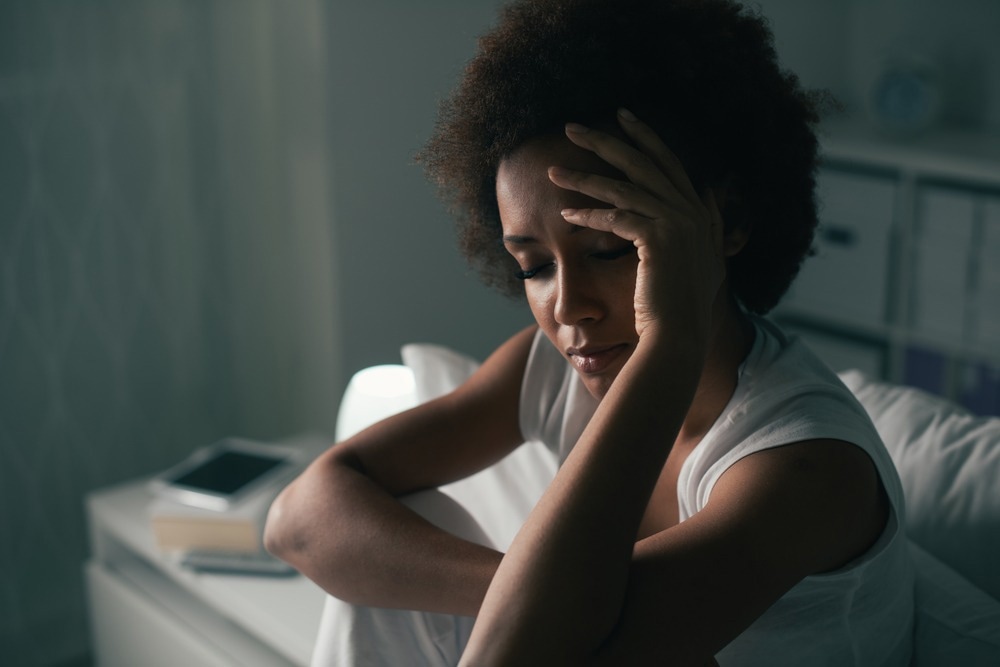In a recent study published in Frontiers in Public Health, researchers investigated insomnia prevalence and its association with anxiety and depression in the non-hospitalized coronavirus disease 2019 (COVID-19)-recovered community.
 Study: Sleep quality among non-hospitalized COVID-19 survivors: a national cross-sectional study. Image Credit: Stock-Asso/Shutterstock.com
Study: Sleep quality among non-hospitalized COVID-19 survivors: a national cross-sectional study. Image Credit: Stock-Asso/Shutterstock.com
Background
The severe acute respiratory syndrome coronavirus 2 (SARS-CoV-2) pandemic has afflicted millions globally since late 2019, with most cases resolved by mid-2023. Common symptoms include coughing, weariness, fever, dyspnea, musculoskeletal issues, gastrointestinal complaints, anosmia, dysgeusia, and vertigo. Post-infection and long-term physical and psychological difficulties are serious public health concerns.
Insomnia is a prevalent complaint, particularly among hospitalized COVID-19 patients. High-risk variables include being female, younger, and more educated, as well as having anxiety, depression, or post-traumatic stress disorder. Poor mental health is associated with insufficient sleep, and chronic disorders such as obstructive sleep apnea (OSA) can affect glycemic control, neurocognitive impairment, and aberrant functional pulmonary alterations.
About the study
In the current nationwide cross-sectional study, researchers investigated insomnia prevalence among COVID-19 survivors with no or moderate symptoms who did not require hospitalization throughout the recovery period (six months) and discovered relevant variables.
Between June and September 2022, the team conducted a web-based survey among 1,056 COVID-19-recovered individuals who recovered within six months of acute SARS-CoV-2 infection and did not need hospitalization. They used the Depression Anxiety and Stress Scale-14 (DASS-14) and the Insomnia Severity Index (ISI). They obtained data on demographics such as age, marital status, sex, educational attainment, occupation, employment status, and comorbidities.
The team asked the respondents to rate their SARS-CoV-2 infection severity and duration (days from the initial SARS-CoV-2-positive to the initial SARS-CoV-2-negative report). In addition, the respondents compared their sleep quality, sleep initiation, and total sleep duration in the previous two weeks with the time before confirming the SARS-CoV-2 infection.
The team used multivariate logistic regressions to determine odds ratios (OR) for the relationships between anxiety and depression scores and insomnia levels among the survey respondents. They included adult COVID-19 survivors (who recovered as confirmed using polymerase chain reaction (PCR) within six months and did not require COVID-19-associated hospitalization) in Vietnam’s general population. They excluded individuals diagnosed with insomnia or psychological disorders before the study.
Results
The study included 1,056 individuals, with the majority being married (64%), female (69%), and having attended university (69%). After the SARS-CoV-2 infection, almost a third of respondents reported shorter sleep duration, worsened sleep quality, and more difficulties falling asleep, and half of them reported more nocturnal awakenings. Insomnia prevalence was 76%, with 23% of patients reporting severe insomnia.
Individuals with anxiety (OR, 3.9) or depression (OR, 3.5) had a significantly increased risk of having insomnia. Other characteristics that increased the likelihood of sleeplessness included higher educational attainment and pre-existing medical conditions, but COVID-19 duration and symptoms had no significant relationship.
Individuals who were divorced or widowed, female, had postgraduate education, were not actively employed, or suffered from chronic medical conditions had higher mean ISI ratings than their peers. Concerning COVID-19, 92% of infected individuals experienced symptoms (mean, 11 weeks). Although these symptomatic individuals showed higher ISI scores (15.2), there was no significant difference compared to individuals without symptoms.
The mean scores for anxiety and depression were 7.6 and 6.4, respectively, with 439 (42%) and 291 (28%) individuals reporting relevant symptoms, respectively. Individuals with symptoms of anxiety (18.7) and depression (19.1) scored significantly higher on the ISI compared to those without (12.4 and 13.5, respectively). Participants experiencing insomnia scored higher on anxiety (9.2) and depression (7.8) than the overall group mean.
In univariate analysis, those who were wedded and had a university degree were significantly less likely to experience insomnia than single and formally-educated individuals. Students were significantly more likely to experience insomnia compared to healthcare workers. Individuals with a history of chronic medical conditions were significantly more likely to suffer from insomnia following COVID-19 compared to healthy individuals. After controlling for variables, healthcare professionals had a significantly increased likelihood of insomnia (OR, 1.6) than workers in other professions; however, there were no differences compared to those who did not work or were students.
Conclusion
Overall, the study findings highlighted insomnia prevalence among COVID-19 survivors, with more than 75% reporting it. This percentage is much higher than that of the general population (10% to 20%) and hospitalized survivors (12% to 47%). Individuals with chronic medical conditions are more likely to suffer from insomnia, which is underreported. Public health researchers should anticipate a greater frequency of insomnia and sleep disorders in this group, which can last for one-third of healed patients up to one year after infection.